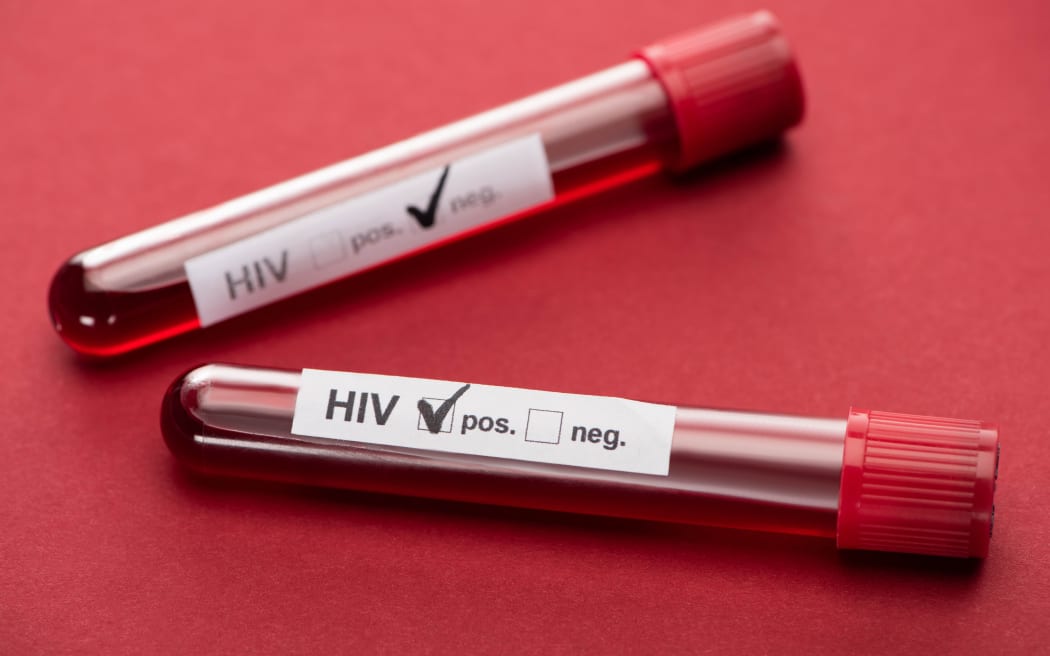Big spike in HIV and AIDS in Fiji leads to action plan to tackle disease
Big spike in HIV and AIDS in Fiji leads to action plan to tackle disease RNZ


Sustainable Development Goals (SDGs) and Efforts to Tackle HIV/AIDS in Fiji

selective focus of negative and positive hiv blood sample test on red background
Photo: Copyright: lightfieldstudios
The Fijian government has announced its commitment to intensify efforts in addressing the increasing cases of HIV/AIDS in the country.
Alarming Rise in HIV/AIDS Cases
- In June 2022, the health minister of Fiji revealed that there were 245 new cases of HIV/AIDS, compared to 151 cases in 2021.
- The number of deaths related to HIV/AIDS is also on the rise.
- According to data released by UNAIDS, Fiji ranks second in the Asia-Pacific region for the fastest growing HIV infection rate and recorded the highest number of HIV-related deaths in the region last year, with a total of 46 deaths.
Nationwide Screening Programme
Dr James Fong, the health secretary, stated in an interview with The Fiji Times that a nationwide screening programme will be implemented.
- The objective of this initiative is to reduce stigma, encourage more people to get tested, and ensure appropriate treatment is sought.
- The screening programme aims to reach all corners of Fiji and involve the entire population.
Lessons from Fiji’s Success
In 2014, Fiji was recognized for its successful response to HIV/AIDS, with fewer than 1000 people estimated to be living with HIV.
- UNAIDS acknowledged that Fiji’s achievements were a result of engaged leadership, integrated multisectoral action, evidence-informed and rights-based approaches, and people-centered partnerships.
- UNAIDS stated that Fiji’s strategy provides valuable lessons that can contribute to broader progress in achieving sustainable development goals.
A Whole-of-Government Approach
Dr Fong emphasized the need for a “whole of government” effort in addressing the HIV/AIDS issue.
- He expressed optimism about the impact of the new screening programme in mitigating the rise in cases.
- The screening programme will include registration for those who test positive, linking them to a treatment program to suppress the viral load.
- For those who test negative, an ongoing support program will be provided, allowing them to be tested regularly over time.
Current Situation and Government Allocation
According to the AIDS data hub, there are currently 2000 people living with HIV in Fiji.
- In the 2023-2024 Budget, the Fijian government allocated FJ$200,000 for its HIV/AIDS Prevention and Control Programme.
Globally, there are approximately 39 million people living with HIV as of 2022.
SDGs, Targets, and Indicators
-
SDG 3: Good Health and Well-being
- Target 3.3: By 2030, end the epidemics of AIDS, tuberculosis, malaria, and neglected tropical diseases and combat hepatitis, water-borne diseases, and other communicable diseases.
- Indicator 3.3.1: Number of new HIV infections per 1,000 uninfected population, by sex, age, and key populations.
- Indicator 3.3.2: Tuberculosis incidence per 100,000 population.
- Indicator 3.3.3: Malaria incidence per 1,000 population.
-
SDG 17: Partnerships for the Goals
- Target 17.17: Encourage and promote effective public, public-private, and civil society partnerships, building on the experience and resourcing strategies of partnerships.
- Indicator 17.17.1: Amount of United States dollars committed to public-private partnerships.
Analysis
The issues highlighted in the article are connected to SDG 3: Good Health and Well-being and SDG 17: Partnerships for the Goals.
1. SDGs addressed or connected to the issues:
- SDG 3: Good Health and Well-being
- SDG 17: Partnerships for the Goals
The article discusses the increasing cases of HIV/AIDS in Fiji and the government’s efforts to tackle the issue. This aligns with SDG 3, which aims to ensure healthy lives and promote well-being for all at all ages. SDG 17 is also relevant as it emphasizes the importance of partnerships to achieve the goals.
2. Specific targets based on the article’s content:
- Target 3.3: By 2030, end the epidemics of AIDS, tuberculosis, malaria, and neglected tropical diseases and combat hepatitis, water-borne diseases, and other communicable diseases.
- Target 17.17: Encourage and promote effective public, public-private, and civil society partnerships, building on the experience and resourcing strategies of partnerships.
The article highlights the need to address the increasing cases of HIV/AIDS in Fiji, which aligns with Target 3.3 of SDG 3. It also mentions the importance of a “whole of government” effort and partnerships to tackle the issue, which relates to Target 17.17 of SDG 17.
3. Indicators mentioned or implied in the article:
- Indicator 3.3.1: Number of new HIV infections per 1,000 uninfected population, by sex, age, and key populations.
- Indicator 17.17.1: Amount of United States dollars committed to public-private partnerships.
The article does not explicitly mention specific indicators. However, Indicator 3.3.1 can be used to measure progress towards Target 3.3 by tracking the number of new HIV infections in Fiji. Indicator 17.17.1 can be used to measure progress towards Target 17.17 by monitoring the amount of funding committed to public-private partnerships in addressing HIV/AIDS.
Table: SDGs, Targets, and Indicators
| SDGs | Targets | Indicators |
|---|---|---|
| SDG 3: Good Health and Well-being | Target 3.3: By 2030, end the epidemics of AIDS, tuberculosis, malaria, and neglected tropical diseases and combat hepatitis, water-borne diseases, and other communicable diseases. | Indicator 3.3.1: Number of new HIV infections per 1,000 uninfected population, by sex, age, and key populations. |
| SDG 17: Partnerships for the Goals | Target 17.17: Encourage and promote effective public, public-private, and civil society partnerships, building on the experience and resourcing strategies of partnerships. | Indicator 17.17.1: Amount of United States dollars committed to public-private partnerships. |
Behold! This splendid article springs forth from the wellspring of knowledge, shaped by a wondrous proprietary AI technology that delved into a vast ocean of data, illuminating the path towards the Sustainable Development Goals. Remember that all rights are reserved by SDG Investors LLC, empowering us to champion progress together.
Source: rnz.co.nz

Join us, as fellow seekers of change, on a transformative journey at https://sdgtalks.ai/welcome, where you can become a member and actively contribute to shaping a brighter future.







